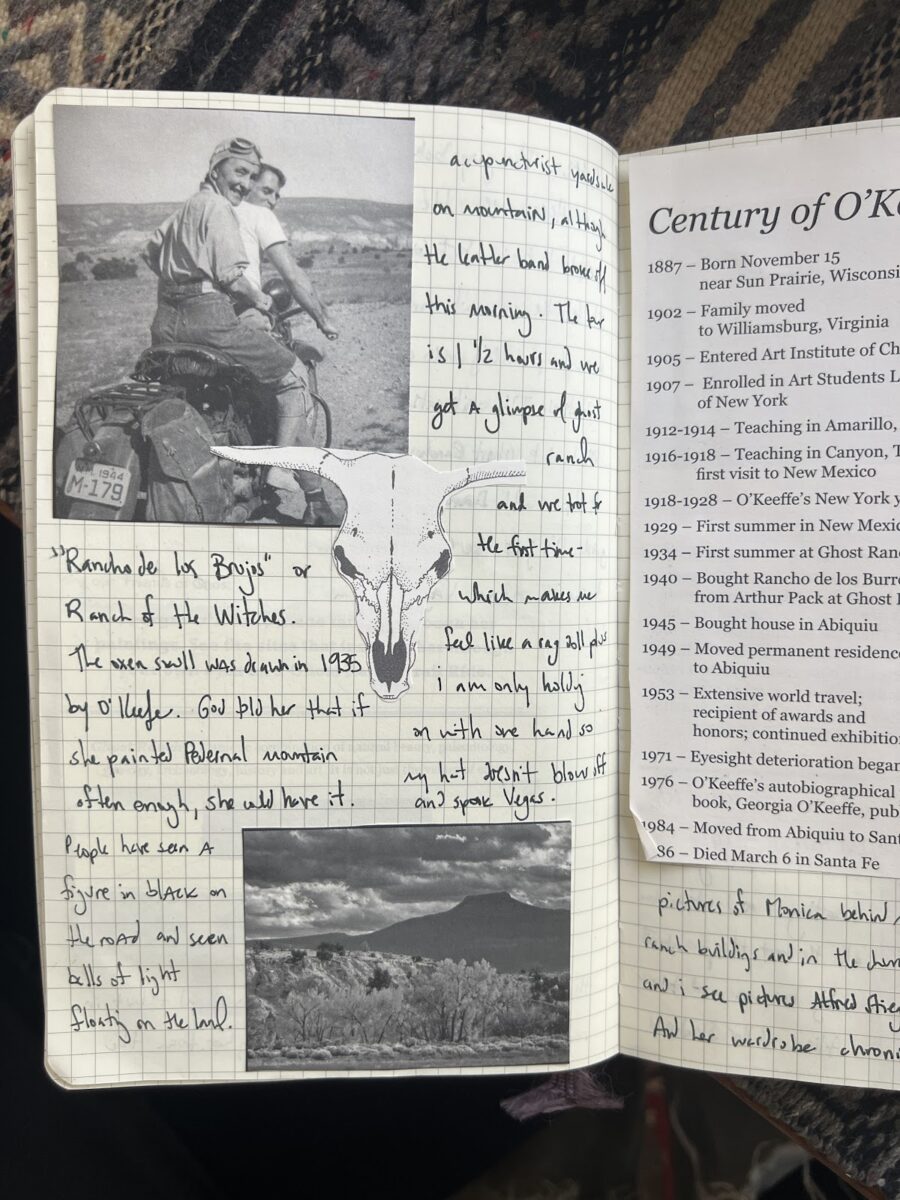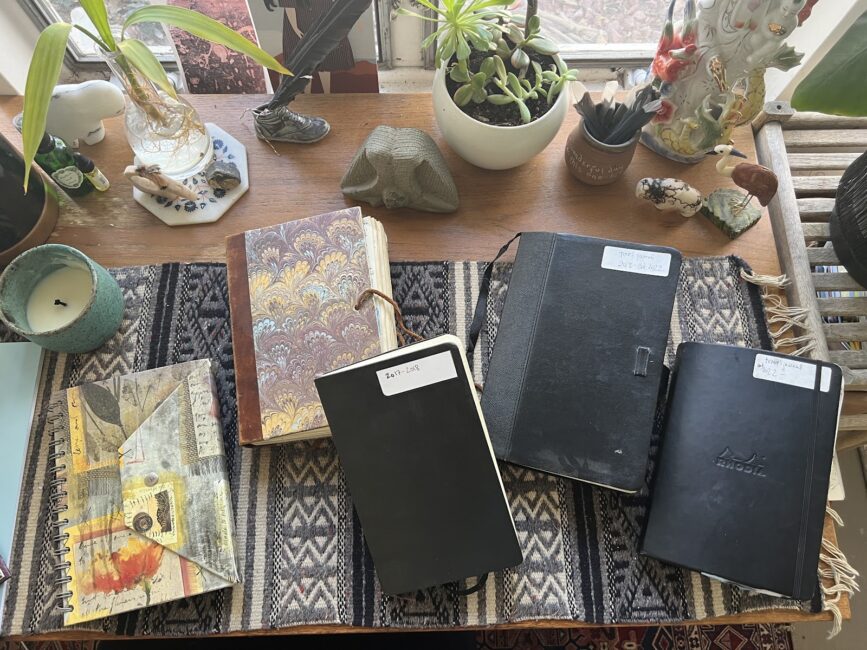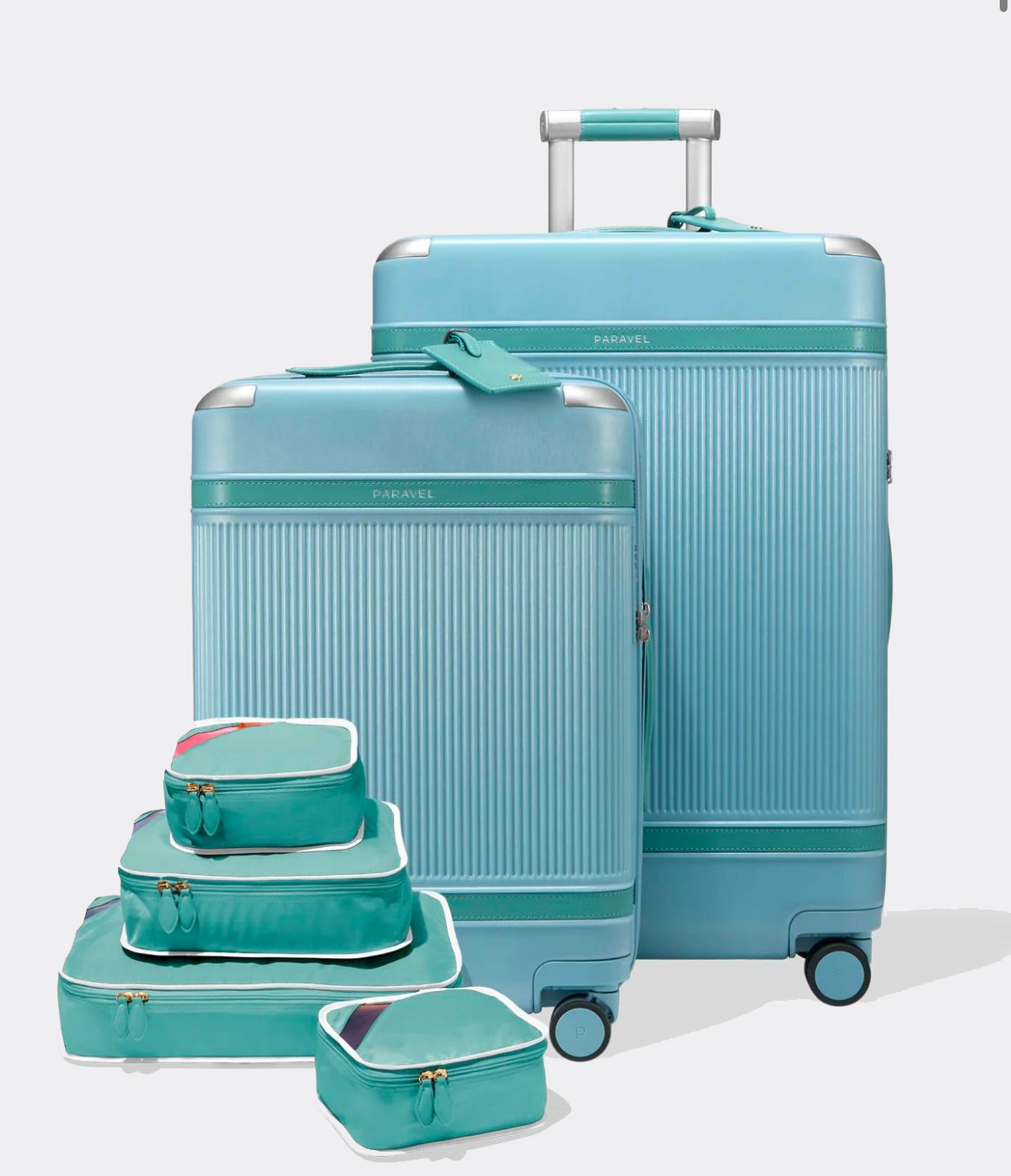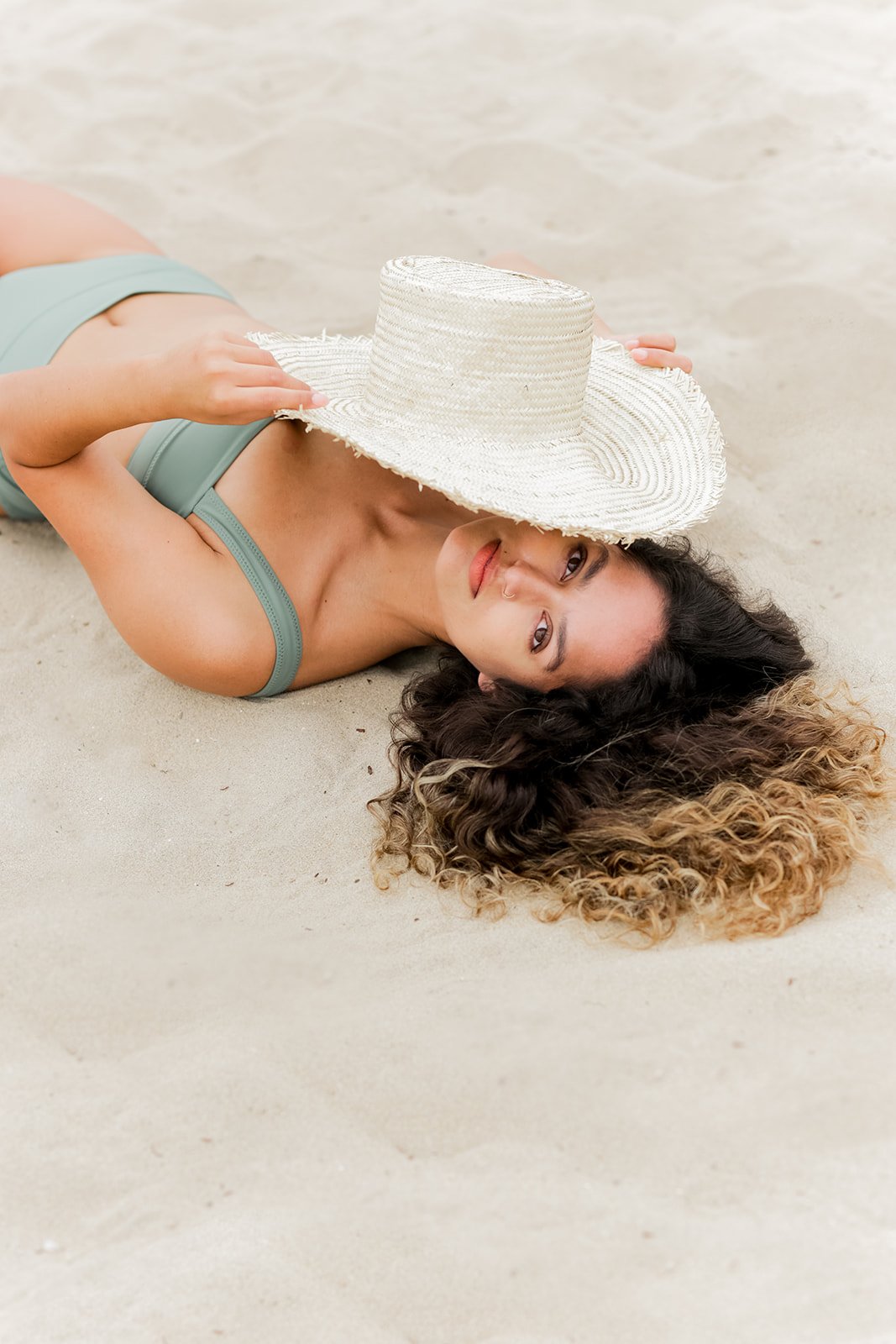
How To Make A Travel Journal
The habit began with a boyfriend. We’d been together for almost two years when I left my Virginia college campus to study abroad for a semester in London. He bought me a journal and wrote on the first page, “I want everything in the present tense. Record while things are happening so I can be there too. I’m smiling right now.”
“I boarded my transatlantic flight with my favorite Sharpie, a pack of glue sticks and a pair of scissors, and began to write.”
I boarded my transatlantic flight with my favorite Sharpie, a pack of glue sticks and a pair of scissors, and began to write. I described the Virgin Atlantic goodie bag with its tiny toothpaste, the man next to me who kept nodding off in my direction, the movies I watched one after another because I was too excited to fall asleep. Then I pasted in my airline ticket stub…and after thinking about it, the coaster that came with my ginger ale because I’d never seen an airplane coaster before (plus my boyfriend, a graphic designer, would appreciate the logo). I ate my first fish and chips at a roadside stand the night after we landed, and since I’d never seen a price in pounds, I glued in the receipt.
On my first phone call back home (before FaceTime existed), I read my journal out loud, describing a Fats Waller tribute: I put my fishnet-clad legs up on the seat in front of me, and jam to Ain’t Misbehavin. I love jazz. It makes me want to move. I get a brownie at intermission. Wear my new black dress. Try to find a place to go afterwards but end up walking home. And there, glued to the top left corner of the page, was the purple ticket stub to prove it.


I bought more glue sticks and asked more questions: “Can I have a brochure?” “Is there a travel magazine in this hotel?” “Do you have a business card?”
I learned early on that, “Do you have a business card” translated to, “I have a complaint to file with your manager.”
I’d watch the person work against their self-preservation instincts to produce a slip of paper that could spell out their doom. So I added seven words: “Do you have a business card I could glue into my travel journal?”
“Wanna go on a treasure hunt with me?” I might as well have asked.
People’s eyes lit up. I could see the cogs and levers turning, until out popped all kinds of Willy Wonka oddities onto the conveyor belt of their creativity. I asked a bartender at The Blue Bar for a souvenir and he stopped making martinis to track down an engraved pencil, a postcard filled with suitcase-shaped stickers, and a packet of vintage luggage tags embossed with the hotel’s logo.
“Like an analog Instagram reel, memories solidified in ticket stubs, postcards from famous sites, city maps, cut-up museum brochures.”
More and more, the story of procurement made for as good of a story as the actual events. I learned my contributors’ names, told them where I’d come from, what I’d seen, asked for food recommendations, good dancing spots, the best theater. We connected in a human moment: The love of sharing good things.
Like an analog Instagram reel, memories solidified in ticket stubs, postcards from famous sites, city maps, cut-up museum brochures. It became a game, a way to demarcate my days, keeping them from blurring into a pastel wash of forgotten experiences — Mondrian over Monet.


In her book “Realism in Romantic Japan,” written in 1930, famed journalist Miriam Beard said, “Certainly, travel is more than the seeing of sights; it is a change that goes on, deep and permanent, in the ideas of living.”
This was why I went to London, to be more than a tourist stockpiling experiences for the optics. Humbled, I wanted to hold proof of life in my hands, let it mark me, shift my being at the most fundamental levels. I wanted to return to my “real life” changed.
What to include in your travel journal
Over the years, I’ve added layers to my intention. I make travel journals in case my four children might someday want to reproduce my trips. Like scattering bread crumbs on the trail, I imagine them drinking a vanilla latte in the same coffee shop where I sat overlooking the Salish Sea, finding the place by using a glue-sticked business card.
The small things are the big things. Don’t just chronicle major events — describe the little whys. When I go back and read my journals from discovering Europe for the first time, I care less about the big-time sight-seeing and more about why I liked the color-coded dishware at that sushi place, or my habit of buying a Lion candy bar every time I rode the tube, or the time I almost ran into Paul Rudd in a West End back alley after he played across from Jessica Lange in “A Long Day’s Journey Into Night.” (Hi, Paul. You still look exactly the same!)
“Don’t just chronicle major events — describe the little whys.”
Make it a daily practice. Don’t wait until the end of the trip to journal. You will forget details, even entire days if the trip has been long enough. Like a practice of gratitude, end each day by reliving it (and you will actually experience gratitude). If you can’t get to it daily, make a list of dated bullet points in your phone and then let your memorabilia trigger your memories onto the page next time you get a chance.
Anytime it gives you fresh eyes, it’s travel. It’s not just the epic trips that qualify. When I took a group of high school students to Greece for ten days, I dedicated an entire journal to that trip. I also have a travel journal I’ve been writing in since 2022, and if I drive to Boulder, Colorado (45 minutes from my home) and eat at a new restaurant, I’ll glue in a business card and write a sentence or two about the meal.
“Turns out, nobody grades your travel journal.”
You get to do what you want. Turns out, nobody grades your travel journal. You don’t have to spell things correctly or conform to the rules of grammar. Spend three pages describing Paperchase, the two-story stationery store around the corner from the Goodge Street tube station, while Anne Hathaway’s thatched roof cottage gets one measly sentence. Who cares? Pen an impassioned proposal to the gods of theater to bless you in the ways they did Fiona Shaw as evidenced by her performance in the play “Medea” (cue tear-stained blotches on the page), and then jump to the time you accidentally kissed that guy outside the pub bathroom and he tasted like mediocre shepherd’s pie. It’s FINE. If you still want ideas on how to journal, check this article out.
You find what you look for. The hunt for a physical souvenir (and not the kind you can procure with money) catalyzes curiosity in a different way. As one of my friends says, it gives you “eyes wide” — you notice details you wouldn’t otherwise pick up on. Life feels more like artistry.
The act of making helps you process. The art studio feeling of spreading your accouterments across a coffee shop counter, the cutting and pasting, scribbles in the margins with the perfect inky pen, the occasional pressed leaf — all of it is a somatic way to integrate new sights and information.


These days, for every person who can produce a business card, there are equal numbers who look at me like I’m speaking a foreign language and tell me to go find their website. There are also places (mostly restaurants) with no paper to offer.
“Take a picture of our QR code,” they say.
And I flash to a time when all I have in a journal are pages of QR codes.
In an increasingly digital age, making meaning with my hands feels like a luxury, like a bridge built to a bygone era of less distraction, more immersion. There’s something about the freedom from words typed in neat rows across an immaculate screen, underscored by highly edited images. My travel journals are like life — messy, experimental, full of sticky-fingered scraps, a stream-of-consciousness romp across a well-worn page.

Have you ever kept a travel journal? Do you have special memories that you preserved in one? Share with us in the comments.
Trinity Wilbourn is a Contributing Editor at The Good Trade. She’s a passionate advocate for holistic well-being in her capacity as a Mind/Body Coach, Education Consultant, and Inner Alignment Facilitator, as well as the founder of Arkitekt Women’s Circles — a peer support organization dedicated to identity exploration, resilience building, and sustainable health for educators, activists, and community leaders. With years of writing experience, Trinity brings thoughtful insights and authenticity to her reviews of sustainable home products and natural beauty and skincare. When she’s not working, you can find her spending time with her four kids, cuddling her Bernedoodle, singing opera, or dancing in the kitchen. Connect with her on Instagram to say hello!




